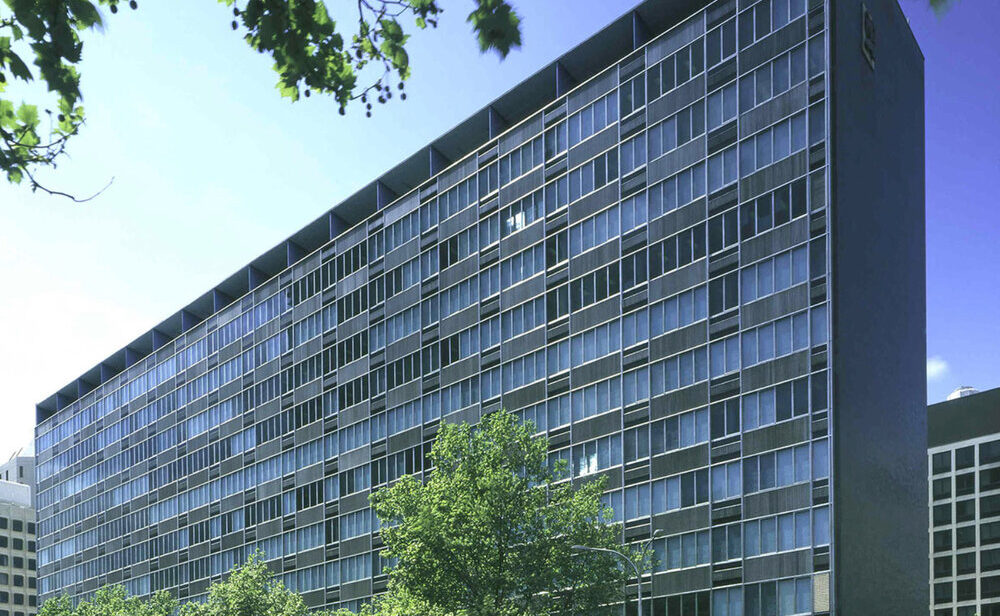
The ‘Epitome of Progress’― court decision saves the MLC building
The development application (DA) for demolition and replacement of the 1957 Bates Smart and McCutcheon-designed MLC building, in North Sydney, was recently refused by the NSW Land and Environment Court.
The building is widely regarded as being of state, if not national, heritage significance. GML played an important role in its retention, having previously assessed the DA for North Sydney Council. GML Partner David Logan was the council’s Heritage Expert in the subsequent NSW Land and Environment Court (LEC) appeal against the council’s refusal of the DA. He provided expert heritage evidence which was ultimately accepted by the Court’s (Senior) Commissioner, Susan Dixon.
Reflecting on the case, David believes it is particularly important given it contains several points of defence for proposals involving demolition of listed heritage items:
- Development control plans (DCPs) which have strong and clearly articulated heritage provisions, including a cross-reference to the principles of the Burra Charter, greatly improve councils’ prospects of successfully defending heritage decisions.
- The Commissioner acknowledged that North Sydney Council’s Planning Controls and strategies are all centred on the retention of the MLC building. In particular, she accepted that the council’s DCP states that the principles of the Burra Charter should be applied in the assessment of any DA, especially the important principle that it advocates of a cautious approach to change: do as much as is necessary to care for the place and to make it usable but otherwise change it as little as possible.
- Controls that place the onus on the applicant to satisfactorily demonstrate why it is not reasonable to retain a heritage item can be very helpful, particularly if the relevant matters to be considered are specified in the controls (as was the case in North Sydney’s DCP in Section 13.8, P2).
- It should not be assumed that refurbishment of a heritage building for commercial use must bring it up to Premium- or A-Grade standard, when B-Grade standard would result in fewer heritage impacts and therefore be more appropriate to the building’s heritage significance. (In the case of the MLC building, the quantity surveyors had determined the scope and costs of adaptation work on the assumption that it had to be a Premium- or A-Grade upgrade.)
- Quantity surveyor costings of adaptation/refurbishment works to a heritage item are of little benefit unless they are based on a scope of conservation work prepared by a heritage expert.
- Heritage conservation is consistent with the principles of intergenerational equity and ecologically sustainable development, both of which are public interest matters and relevant to the assessment of development applications. The Court considered that demolition of the MLC building would be inconsistent with these objectives.

Photo: David Logan

Photo: Bates Smart
